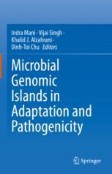Search
Search Results
-
High-Throughput Screening for Thermostable Polyester Hydrolases
Due to the promise of more sustainable recycling of plastics through biocatalytic degradation, the search for and engineering of polyester hydrolases...
-
The PET-Degrading Potential of Global Metagenomes: From In Silico Mining to Active Enzymes
Against the background of the steadily increasing amount of plastic waste in the sea and on land, it is more important than ever to find ways out of...
-
Investigating the Bacterial and Fungal Communities Involved in Dead Biomass Degradation in Forest Soils
Stable isotope probing (SIP)Stable isotope probing (SIP) provides the opportunity to label decomposer microorganisms that build their biomass on a...
-
Cloud Computing for Metagenomics: Building a Personalized Computational Platform for Pipeline Analyses
Cloud Computing services such as Microsoft Azure, Amazon Web Services, and Google Cloud provide a range of tools and services that enable scientists...
-
Tracking Antibiotic Resistance from the Environment to Human Health
Antimicrobial resistance (AMR) is one of the threats to our world according to the World Health Organization (WHO). Resistance is an evolutionary...
-
DNA-, RNA-, and Protein-Based Stable-Isotope Probing for High-Throughput Biomarker Analysis of Active Microorganisms
Stable-isotope probing (SIP) enables researchers to target active populations within complex microbial communities, which is achieved by providing...
-
Construction of Small-Insert and Large-Insert Metagenomic Libraries
The vast majority of the Earth’s biological diversity are hidden in uncultured and yet uncharacterized microbial genomes. The construction of...
-
MycoCosm, the JGI’s Fungal Genome Portal for Comparative Genomic and Multiomics Data Analyses
MycoCosm ( https://mycocosm.jgi.doe.gov/ ) is an integrated fungal genomics portal that currently includes...
-
Whole-Genome Sequencing of Bacterial Endophytes From Fresh and Preserved Plant Specimens
Many plants harbor symbiotic bacteria in their leaves, sometimes within structures visible with the naked eye. These bacteria play critical roles for...
-
Tissue Cultivation, Preparation, and Extraction of High Molecular Weight DNA for Single-Molecule Genome Sequencing of Plant-Associated Fungi
Extraction of high-quality, high molecular weight DNA is a critical step for sequencing an organism’s genome. For fungi, DNA extraction is often...
-
Assigning Functions of Unknown Enzymes by High-Throughput Enzyme Characterization
The discovery of new enzymes is strongly enabled by the implementation of high-throughput screening methods to detect enzymatic activity in single...
-
Functional Metagenomics as a Tool to Tap into Natural Diversity of Valuable Biotechnological Compounds
The marine ecosystem covers more than 70% of the world’s surface, and oceans represent a source of varied types of organisms due to the diversified...
-
Functional Metagenomics Approach for the Discovery of Novel Genes Encoding Phosphatase Activity
Phosphate release from inorganic and organic phosphorus compounds can be enzymatically mediated. Phosphate-releasing enzymes, comprising acid and...
-
Construction of a Transposon Mutant Library in the Pathogen Agrobacterium tumefaciens C58 and Identification of Genes Involved in Gall Niche Exploitation and Colonization
Agrobacterium tumefaciens is a plant pathogen that causes crown gall disease on a wide range of host species by transferring and integrating a part...
-
Amplicon Sequencing Pipelines in Metagenomics
Taxonomic profiling among a large number of samples is a fundamental task during amplicon sequencing analysis. The heterogeneity and technical noises...
-
Application of High-Throughput Sequencing (HTS) to Enhance the Well-Being of an Endangered Species (Malayan Tapir): Characterization of Gut Microbiome Using MG-RAST
The Tapirus indicus, also known as Malayan tapir, has been listed as a rapidly declining animal species in the past decades, along with being...
-
Computation Tools for Prediction and Analysis of Genomic Islands
The genomic island (GI) is a discrete cluster of genes in prokaryotic genomes acquired through horizontal gene transfer (HGT). GI includes genes...
-
Genomic Islands in Uropathogenic Escherichia coli
Discrete DNA segments known as genomic islands are responsible for establishing horizontally transmitted genes in a population. This region might be...
-
Genomic Islands in Marine Bacteria
Bacterial genomes are dynamic in nature having conserved pool genes across taxonomic boundaries. Deep-sea presently emerging as a new source for...
-
Genomic Islands in the Gut Microbiome: Current Knowledge and the Application in the Probiotics Field
Intestinal microorganisms play a significant role in human health, they are considered part of the human being. The number of functional genes in...
